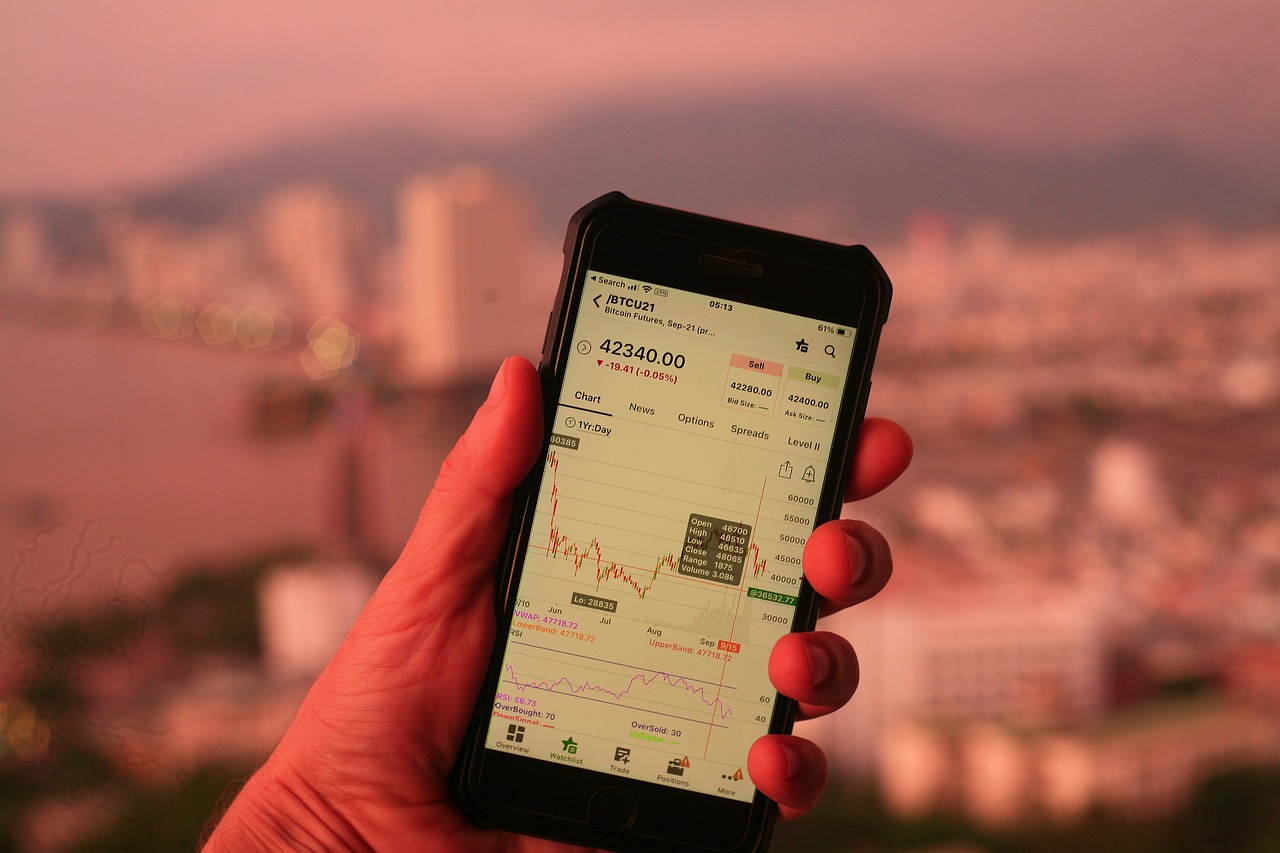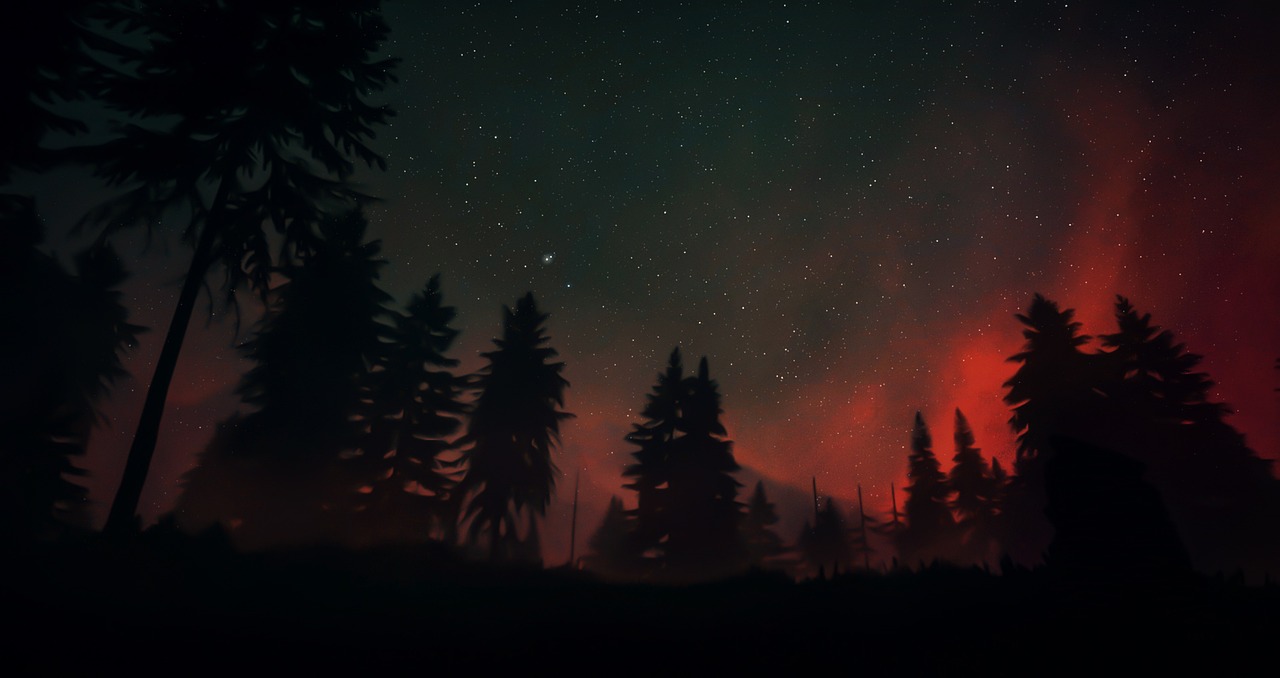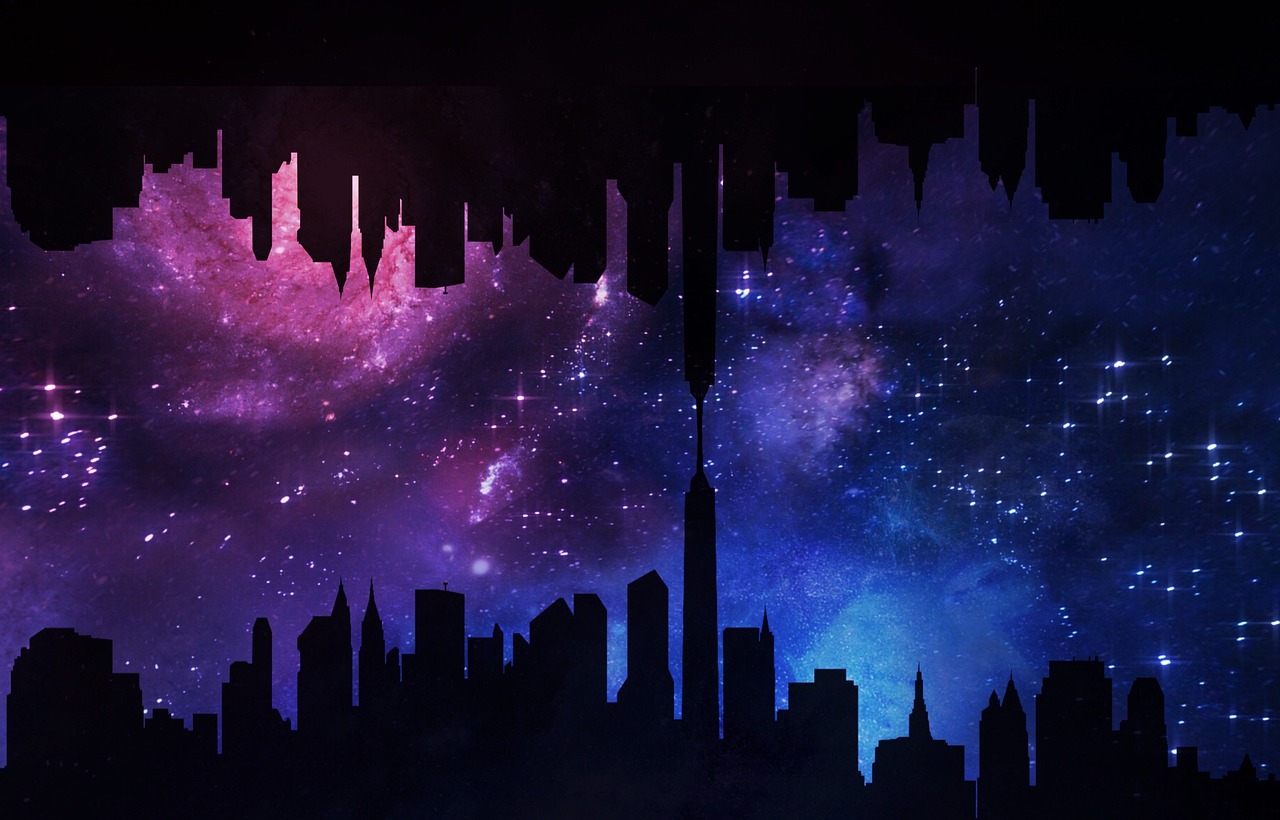The Role of NFTs in Digital Ownership
In today's digital age, the way we perceive ownership is undergoing a radical transformation, thanks in large part to Non-Fungible Tokens, or NFTs. These unique digital assets are not just a passing trend; they represent a significant shift in how we understand and manage ownership in the virtual world. Imagine owning a piece of digital art, a collectible, or even a virtual real estate plot that is verifiably yours, thanks to blockchain technology. This concept of ownership, once confined to physical items, is now expanding into the digital realm, where the possibilities seem endless.
NFTs are like digital certificates of authenticity that confirm who owns what in a world where duplication is as easy as a click. They allow artists, musicians, and creators to monetize their work in ways that were previously unimaginable. But what does this mean for the average person? Well, it opens up a treasure trove of opportunities for collectors and investors alike, while also presenting unique challenges. The landscape is evolving rapidly, and understanding the implications of NFTs is essential for anyone looking to navigate this new frontier.
As we dive deeper into the world of NFTs, we will explore their defining characteristics, the technology that powers them, and the impact they have on artists and creators. Furthermore, we will examine the legal and ethical considerations that arise from this new form of ownership. Are NFTs the future of digital ownership, or just a passing fad? One thing is for sure: the conversation around NFTs is just getting started, and it promises to be a fascinating journey.
- What are NFTs? NFTs are unique digital assets stored on a blockchain that represent ownership of specific items or content.
- How do NFTs work? NFTs use blockchain technology to ensure authenticity and ownership, allowing for secure transactions.
- Can anyone create an NFT? Yes, anyone can create an NFT, but it requires some technical knowledge and access to NFT platforms.
- What are the environmental concerns associated with NFTs? The energy consumption of blockchain technology raises sustainability issues related to NFT creation and trading.

Understanding NFTs
Non-Fungible Tokens, or NFTs, have taken the digital world by storm, redefining what it means to own something online. Unlike traditional cryptocurrencies such as Bitcoin or Ethereum, which are fungible and can be exchanged for one another, NFTs are unique digital assets that represent ownership of a specific item or piece of content on the blockchain. This uniqueness is what sets NFTs apart, allowing them to serve as certificates of authenticity for digital art, music, videos, and even virtual real estate.
To truly grasp the concept of NFTs, it's essential to understand their defining characteristics. Each NFT is stored on a blockchain—a decentralized digital ledger that ensures transparency and security. This means that once an NFT is created, its ownership and transaction history can be tracked and verified, making it nearly impossible to forge or duplicate. In this digital landscape, ownership is not just a claim; it's a verifiable fact.
One of the most exciting aspects of NFTs is their ability to encapsulate various forms of digital content. Whether it’s a stunning piece of digital artwork, a catchy song, or a memorable tweet, NFTs can represent them all. Artists and creators can mint their work into NFTs, allowing them to sell it directly to collectors without the need for intermediaries. This direct connection between creators and their audience fosters a new level of engagement and appreciation for digital art.
However, with great opportunity comes great complexity. The NFT market can be a double-edged sword. While it opens up new avenues for revenue, it also presents challenges, such as market saturation and the need for technical knowledge. Creators must navigate this new terrain carefully, balancing the potential for profit with the risks of overexposure and the ever-changing demands of collectors.
In summary, NFTs represent a groundbreaking shift in how we perceive ownership in the digital realm. They are more than just digital collectibles; they are a new way to think about value, creativity, and the relationship between artists and their audiences. As we continue to explore this fascinating world, it’s crucial to stay informed about the evolving landscape of NFTs and their implications for the future of digital ownership.

The Technology Behind NFTs
When we talk about Non-Fungible Tokens, or NFTs, we are diving deep into a realm where technology and creativity collide. At the heart of NFTs lies blockchain technology, a decentralized digital ledger that records transactions across many computers. This means that once an NFT is created, its ownership and transaction history are securely stored and cannot be altered. Unlike traditional cryptocurrencies, which are fungible (meaning one Bitcoin is always equal to another), NFTs are unique and represent a specific item or piece of content. This uniqueness is what makes them so valuable in the digital landscape.
So, what exactly powers these digital assets? The answer is a combination of smart contracts and various blockchain platforms. Smart contracts are self-executing contracts with the terms of the agreement directly written into code. They automatically enforce and execute the terms when certain conditions are met. This automation not only streamlines the process but also adds a layer of security, ensuring that ownership rights are respected without the need for intermediaries.
Imagine a vending machine that dispenses a drink when you insert money. Smart contracts operate in a similar fashion. They are coded instructions that trigger actions based on predetermined conditions. For NFTs, this means that when you purchase an NFT, the smart contract verifies the transaction and transfers ownership to your digital wallet. This seamless process eliminates the need for a middleman, making transactions faster and more efficient.
The advantages of smart contracts in the NFT space are numerous:
- Cost-Effective: By cutting out intermediaries, creators and buyers save on transaction fees.
- Transparency: All transactions are recorded on the blockchain, providing a clear and tamper-proof history.
- Royalty Payments: Artists can program smart contracts to automatically pay them a percentage of future sales, ensuring they continue to earn from their work.
However, it’s not all sunshine and rainbows. Smart contracts can also present challenges. For instance, coding errors can lead to vulnerabilities that hackers might exploit. Additionally, once a smart contract is deployed, it’s challenging to make changes. This rigidity can pose risks if unforeseen issues arise. Thus, while smart contracts offer great potential, they also require careful consideration and expertise in coding.
There are several platforms where users can create, buy, and sell NFTs, each catering to different needs and types of digital assets. Some of the most popular platforms include:
| Platform | Features | Type of Assets |
|---|---|---|
| OpenSea | Largest marketplace, supports various types of NFTs | Art, collectibles, virtual goods |
| Rarible | Community-driven, allows users to create NFTs | Art, music, domain names |
| Nifty Gateway | Curated drops from popular artists | Art, collectibles |
Each platform has its unique characteristics and caters to different audiences, making it essential for creators and collectors to choose wisely based on their needs and preferences.

Smart Contracts Explained
When we talk about Smart Contracts, we’re diving into a fascinating realm of technology that’s fundamentally changing how we think about agreements and transactions in the digital world. Imagine a contract that automatically executes itself when certain conditions are met, without the need for a middleman. Sounds like something out of a sci-fi movie, right? But that’s precisely what smart contracts do! They are essentially self-executing contracts where the terms of the agreement are directly written into lines of code. This means that once the conditions are set, the contract operates independently, ensuring that all parties adhere to the agreed-upon terms.
So, how does this all work? Well, smart contracts are built on blockchain technology, which is the backbone of NFTs. This decentralized and transparent system ensures that once a smart contract is deployed, it cannot be altered or tampered with. This feature adds a layer of security and trust that traditional contracts can struggle to provide. For instance, if you were to sell an NFT, a smart contract could automatically transfer the ownership of the digital asset to the buyer as soon as the payment is confirmed. No delays, no disputes—just a seamless transaction!
Let’s break down the process a bit further. Here’s how a typical smart contract transaction looks:
| Step | Description |
|---|---|
| 1 | The buyer and seller agree on the terms of the sale. |
| 2 | The smart contract is created and deployed on the blockchain. |
| 3 | The buyer sends payment to the smart contract. |
| 4 | Once payment is verified, the smart contract automatically transfers the NFT to the buyer. |
| 5 | The seller receives the payment, completing the transaction. |
This automated process not only simplifies transactions but also minimizes the risk of fraud. However, while smart contracts offer numerous advantages, they are not without their challenges. For one, they are only as good as the code written into them. If there’s a flaw or vulnerability in the code, it could lead to significant issues, including the potential loss of assets. Furthermore, understanding the technical aspects of smart contracts can be daunting for those who are not tech-savvy, making it essential for users to educate themselves before engaging in NFT transactions.
In conclusion, smart contracts are revolutionizing the way we conduct transactions in the digital space. They provide a level of efficiency and security that traditional contracts simply cannot match. As we continue to embrace this technology, it’s crucial to stay informed about both its benefits and its potential pitfalls. So, are you ready to dive into the world of smart contracts and NFTs? The future of digital ownership is just a few clicks away!

Benefits of Smart Contracts
Smart contracts are revolutionizing the way we think about transactions in the digital world, especially when it comes to Non-Fungible Tokens (NFTs). These self-executing contracts, with their terms directly written into code, provide a multitude of benefits that are hard to ignore. Imagine a world where you don’t have to rely on a middleman to buy or sell art; that’s the power of smart contracts!
One of the most significant advantages of smart contracts is their ability to eliminate the need for intermediaries. Traditional transactions often require a third party, such as an escrow service or legal representative, to ensure that both parties fulfill their obligations. This involvement can lead to increased costs and potential delays. With smart contracts, transactions are automated, meaning they can be executed instantly once the conditions are met. This efficiency not only saves time but also reduces transaction fees, making it more affordable for creators and collectors alike.
Another key benefit is the increased transparency and security that smart contracts offer. Since these contracts are stored on a blockchain, every action taken is recorded and immutable. This means that once a contract is in place, it cannot be altered or tampered with, providing a level of security that traditional contracts simply cannot match. For artists and collectors, this transparency ensures that ownership is clear and verifiable, reducing the risk of fraud.
Additionally, smart contracts facilitate royalty payments for artists in a way that was previously unimaginable. When an NFT is sold, a smart contract can be programmed to automatically pay the original creator a percentage of the sale price. This means that artists can continue to earn from their work even after it has been sold, creating a sustainable income model that empowers them in a rapidly changing digital landscape.
However, the benefits of smart contracts extend beyond just artists and collectors. They also enhance the overall marketplace experience. By automating processes such as bidding, ownership transfer, and payment collection, smart contracts streamline operations for NFT platforms. This leads to a smoother experience for users, encouraging more people to engage in the buying and selling of digital assets.
In summary, the benefits of smart contracts in the NFT space are profound. They not only reduce costs and enhance security but also provide new revenue streams for artists and improve the user experience in digital marketplaces. As we continue to explore the potential of NFTs, smart contracts will undoubtedly play a crucial role in shaping the future of digital ownership.

Challenges of Smart Contracts
While smart contracts are hailed as a revolutionary advancement in the world of NFTs, they are not without their challenges. One of the primary concerns is the potential for security vulnerabilities. Just like any software, smart contracts can be susceptible to bugs and exploits that malicious actors can take advantage of. Imagine a digital vault designed to keep your valuables safe, but with a hidden flaw that allows thieves to unlock it. This is the kind of risk that can arise when smart contracts are not thoroughly audited before deployment.
Another significant challenge is the issue of coding errors. Smart contracts are written in code, and even a small mistake can lead to catastrophic outcomes. For instance, a misplaced comma or an incorrect variable could result in funds being lost forever or transactions being executed incorrectly. This is akin to a typo in a legal document that could change the meaning entirely, potentially leading to disputes and losses.
Moreover, the irreversibility of blockchain transactions adds another layer of complexity. Once a smart contract is deployed and executed, it cannot be altered or undone. This permanent nature means that if a mistake is made, there is no going back. For creators and investors, this can be a daunting prospect, as it places immense pressure on the accuracy of coding and the overall design of the contract.
Additionally, the complexity of smart contracts can be a barrier to entry for many users. Understanding how these contracts work requires a certain level of technical knowledge that not everyone possesses. This can create a divide between those who can navigate the NFT space effectively and those who cannot, potentially limiting participation in this burgeoning market.
Finally, there is the challenge of regulatory uncertainty. As governments and regulatory bodies scramble to catch up with the fast-paced world of blockchain technology, the legal status of smart contracts remains murky. This uncertainty can create hesitance among potential investors and creators, who may worry about future regulations that could impact their rights and responsibilities.
In summary, while smart contracts offer incredible advantages for the NFT ecosystem, they come with a set of challenges that must be navigated carefully. Addressing these issues is crucial for ensuring the long-term viability and trustworthiness of NFTs and their underlying technologies.
- What are smart contracts? Smart contracts are self-executing contracts with the terms of the agreement directly written into code, allowing for automatic execution of transactions without intermediaries.
- What are the main challenges of using smart contracts? The main challenges include security vulnerabilities, coding errors, irreversibility of transactions, complexity, and regulatory uncertainty.
- How can I protect my investments in NFTs? To protect your investments, ensure thorough research on the platforms you use, understand the smart contracts involved, and consider using audited contracts to mitigate risks.
- Are smart contracts legally binding? The legal status of smart contracts can vary by jurisdiction, and while they are generally recognized, their enforceability may depend on existing laws and regulations.

Popular NFT Platforms
In the rapidly evolving world of Non-Fungible Tokens (NFTs), several platforms have emerged as key players, each offering unique features and experiences for users. These platforms serve as marketplaces where creators can mint their NFTs and collectors can buy, sell, and trade them. Let's explore some of the most popular NFT platforms that are shaping the landscape of digital ownership.
One of the most well-known platforms is OpenSea, often referred to as the "Amazon of NFTs." OpenSea boasts a vast selection of digital assets, ranging from art and music to virtual real estate and collectibles. What makes OpenSea particularly appealing is its user-friendly interface, allowing even newcomers to navigate the NFT space with ease. With the ability to create, buy, and sell NFTs across multiple blockchains, OpenSea has established itself as a go-to destination for NFT enthusiasts.
Another prominent platform is Rarible, which distinguishes itself through its community-driven approach. Rarible allows users to create and sell their NFTs while also enabling them to participate in governance decisions through the RARI token. This decentralized model empowers artists and collectors alike, giving them a stake in the platform's future. Additionally, Rarible supports various types of digital assets, making it a versatile option for creators.
Foundation is another noteworthy platform, catering specifically to artists and creators. It has gained popularity for its curated approach, where artists must be invited to join the platform, ensuring a high quality of work. Foundation emphasizes the community aspect, allowing artists to connect directly with collectors, fostering a sense of engagement and shared purpose. This platform is particularly appealing for those looking to build a reputation in the NFT space while collaborating with other creatives.
For those interested in gaming, Axie Infinity has taken the NFT world by storm. This platform combines blockchain technology with gaming, allowing users to buy, sell, and breed virtual creatures known as Axies. Players can earn cryptocurrency by participating in battles and completing quests, making it a unique blend of entertainment and investment. Axie Infinity exemplifies how NFTs can create new economic models within gaming, attracting a diverse audience of players and collectors.
Lastly, SuperRare stands out as a premium platform focused on high-quality digital art. It operates on a selective basis, showcasing a carefully curated collection of artists and their work. SuperRare places a strong emphasis on authenticity and provenance, ensuring that collectors can trust the uniqueness of the pieces they acquire. This platform has attracted significant attention from art collectors and investors, further legitimizing the role of NFTs in the art world.
As the NFT market continues to grow, these platforms illustrate the diverse opportunities available for creators and collectors. Each platform has its unique strengths, catering to different niches and audiences. Whether you’re an artist looking to showcase your work, a collector hunting for the next big piece, or an investor exploring new digital assets, there’s a platform that fits your needs.
In summary, the rise of popular NFT platforms has transformed the way we perceive digital ownership. With their unique features and community-driven approaches, these platforms are not only facilitating transactions but also fostering a vibrant ecosystem of creativity and innovation.

The Impact on Artists and Creators
In recent years, Non-Fungible Tokens (NFTs) have emerged as a game-changer for artists and creators, revolutionizing the way they monetize their work and engage with their audience. Imagine being able to sell your art directly to collectors without the need for a gallery or intermediary. This is precisely what NFTs offer. By leveraging blockchain technology, artists can create unique digital assets that represent ownership of their work, allowing them to reach a global audience and retain more control over their creations.
One of the most exciting aspects of NFTs is the potential for artists to earn royalties on secondary sales. Traditionally, once an artwork is sold, the artist often sees little to no financial benefit from future sales. However, with NFTs, creators can embed smart contracts that automatically pay them a percentage of any future sales. This means that if a collector decides to sell the artwork down the line, the original artist can still profit from that transaction. It’s like having a built-in safety net that ensures artists are rewarded for their ongoing value.
Furthermore, NFTs provide artists with a platform to showcase their work in innovative ways. They can create interactive experiences or limited editions, making their art even more appealing to collectors. For instance, an artist might sell a digital painting along with an augmented reality experience that allows the buyer to see the artwork come to life in their own space. This level of engagement not only enhances the value of the artwork but also fosters a deeper connection between the artist and their audience.
However, the NFT landscape is not without its challenges. As the market becomes increasingly saturated, artists must find ways to stand out in a sea of digital creations. It’s crucial for them to build a personal brand and engage with their community actively. This could mean sharing behind-the-scenes content, participating in online discussions, or collaborating with other artists. The more they interact with their audience, the more likely they are to cultivate a loyal following that will support their work.
Moreover, while the opportunities are vast, creators also face a steep learning curve when it comes to understanding the technical aspects of NFTs. From setting up a digital wallet to navigating various blockchain platforms, the initial steps can be daunting. Artists may need to invest time and resources into learning these technologies or seek assistance from those who are more tech-savvy. This necessity can create a barrier to entry for some, which is unfortunate given the potential benefits.
In summary, NFTs have opened up a world of possibilities for artists and creators, allowing them to take control of their careers like never before. They provide unique opportunities for monetization, engagement, and community building. However, the challenges of market saturation and technical knowledge must be navigated carefully. As the digital landscape continues to evolve, those who adapt and embrace these changes will likely thrive in this new era of digital ownership.
- What are NFTs? NFTs are unique digital assets that represent ownership of a specific item or piece of content on the blockchain.
- How do artists benefit from NFTs? Artists can sell their work directly to collectors, earn royalties on secondary sales, and retain more control over their creations.
- What challenges do creators face in the NFT space? Challenges include market saturation, the need for technical knowledge, and the necessity to build a personal brand.
- Are NFTs environmentally friendly? The environmental impact of NFTs is a concern due to the energy consumption of blockchain technology, which is an ongoing debate in the community.

Empowering Artists
In the ever-evolving landscape of digital art, Non-Fungible Tokens (NFTs) have emerged as a game changer, providing artists with unprecedented opportunities to showcase and monetize their work. Imagine being able to sell your artwork directly to collectors without the need for a gallery or intermediary. That's the power of NFTs! By tokenizing their creations, artists can maintain ownership while reaching a global audience. This not only enhances their visibility but also opens up new revenue streams that were previously unimaginable.
One of the most exciting aspects of NFTs is the ability for artists to earn royalties on secondary sales. Traditionally, when an artwork is sold, the original creator often sees no further financial benefit. However, with NFTs, artists can program their tokens to automatically pay them a percentage every time the artwork is resold. This means that as their work gains value, so does their income, creating a sustainable model for artists to thrive in the digital age.
Moreover, NFTs empower artists by providing a platform for direct engagement with their audience. Through social media and NFT marketplaces, creators can build a loyal fan base, receive instant feedback, and even collaborate with other artists. This level of interaction fosters a sense of community and belonging that traditional art markets seldom offer. Artists can share their creative processes, tell the stories behind their works, and connect with collectors on a personal level, enhancing the overall experience for both parties.
However, it's essential to acknowledge that while NFTs are empowering, they also come with challenges. The market is rapidly becoming saturated, making it more difficult for individual artists to stand out. Additionally, the technical knowledge required to navigate the NFT landscape can be daunting for some. But fear not! There are plenty of resources available to help artists learn the ropes. From online tutorials to community forums, the support network for budding NFT creators is growing.
In essence, NFTs are not just a passing trend; they represent a significant shift in how artists can operate in the digital realm. By embracing this new technology, artists can take control of their careers, reap the rewards of their creativity, and connect with a global audience like never before. As we look to the future, it’s clear that the potential of NFTs to empower artists is just beginning to be realized. So, are you ready to dive into the world of NFTs?
- What are NFTs? NFTs, or Non-Fungible Tokens, are unique digital assets that represent ownership of a specific item or content on the blockchain.
- How do NFTs benefit artists? NFTs allow artists to retain control over their work, earn royalties on secondary sales, and connect directly with their audience.
- What challenges do artists face with NFTs? Market saturation and the need for technical knowledge are significant challenges that artists must navigate in the NFT space.
- Can artists protect their copyright with NFTs? While NFTs can complicate copyright ownership, artists can still take measures to protect their intellectual property through proper legal channels.
- Are NFTs environmentally friendly? The environmental impact of blockchain technology is a concern, with discussions ongoing about how to make NFT creation and trading more sustainable.

Challenges for Creators
While NFTs have opened up a world of possibilities for artists and creators, the journey is not without its challenges. One of the most pressing issues is the overwhelming market saturation. With thousands of new NFTs flooding the market every day, standing out becomes a Herculean task. Imagine trying to sell a unique painting at a bustling flea market—how do you catch the eye of a passerby? This is the reality for many creators today, as they compete not only with established artists but also with countless newcomers eager to make their mark.
Moreover, the technical knowledge required to create and sell NFTs can be daunting. Many artists are passionate about their craft but may not have the skills necessary to navigate blockchain technology or digital wallets. This steep learning curve can deter talented individuals from entering the space, leading to a missed opportunity for both the artists and the NFT ecosystem. To illustrate, consider a talented painter who struggles with uploading their work to a blockchain platform. If they can't figure it out, their art remains unseen, and their potential revenue is lost.
Additionally, the volatile nature of the NFT market poses a significant risk for creators. Prices can fluctuate wildly, which can be both exhilarating and terrifying. An artist might sell a piece for a substantial amount one day, only to find that the same piece is worth a fraction of that the next. This unpredictability can lead to financial instability, making it difficult for artists to plan for their futures.
Another challenge is the issue of copyright and intellectual property. With the rise of NFTs, questions about ownership and rights have become more complex. For instance, if an artist creates an NFT of their work, but someone else replicates it and sells it as their own, what recourse does the original artist have? This ambiguity can create anxiety among creators who want to protect their art but may not fully understand how copyright laws apply in the digital realm.
Finally, there is the question of community engagement. Building a loyal following is crucial for any artist, but in the NFT space, it can feel like a constant uphill battle. Artists need to not only create but also market their work effectively. This often requires a significant investment of time and resources into social media and community building, which can detract from the time they have available to create new art.
In summary, while NFTs offer exciting opportunities for creators, they also come with a unique set of challenges. Navigating market saturation, acquiring technical skills, managing financial volatility, protecting intellectual property, and engaging with a community are all hurdles that artists must overcome. By addressing these issues, creators can better position themselves for success in the ever-evolving landscape of digital ownership.
- What are NFTs? NFTs, or Non-Fungible Tokens, are unique digital assets that represent ownership of specific items or content on the blockchain.
- How do NFTs benefit artists? NFTs allow artists to maintain control over their work and earn royalties on secondary sales.
- What challenges do creators face in the NFT space? Creators face challenges such as market saturation, the need for technical knowledge, financial volatility, copyright issues, and community engagement.
- Are NFTs environmentally friendly? The environmental impact of NFTs is a concern, as blockchain technology can be energy-intensive.

Legal and Ethical Considerations
The rise of Non-Fungible Tokens (NFTs) has sparked a whirlwind of legal and ethical discussions. As digital assets continue to gain traction, questions surrounding ownership, copyright, and authenticity have become more pressing than ever. For creators and collectors alike, understanding these issues is crucial in navigating the complex landscape of NFTs. One of the most significant concerns is how copyright laws apply to these unique digital assets. Unlike traditional art forms, where ownership is relatively straightforward, NFTs can complicate copyright enforcement. When an artist mints an NFT, they may retain certain rights, but the buyer typically acquires only the token itself, not the underlying copyright. This creates a gray area that can lead to disputes over who truly owns the rights to the content represented by the NFT.
Moreover, the question of authenticity looms large in the NFT space. While blockchain technology offers a way to verify ownership history, it doesn't necessarily guarantee that the content is original or free from copyright infringement. For instance, if someone mints an NFT of a piece of art they didn't create, the legal ramifications can be significant. This situation raises ethical questions about the responsibility of platforms to monitor and enforce copyright claims. Are they just marketplaces, or do they have a duty to protect artists from theft and misrepresentation? This is a debate that is still unfolding.
In addition to copyright issues, the environmental impact of blockchain technology is another critical consideration. The energy consumption associated with minting and trading NFTs has raised eyebrows, particularly among environmentally conscious consumers and creators. Many NFTs are built on networks that require substantial computational power, leading to a significant carbon footprint. This has prompted discussions about sustainability in the NFT space, with some platforms exploring more eco-friendly alternatives. As the world becomes more aware of climate change, the pressure is on NFT creators and collectors to consider the environmental implications of their digital transactions.
Ultimately, navigating the legal and ethical landscape of NFTs requires a delicate balance. Creators need to understand their rights and how to protect their work, while collectors must be aware of the potential pitfalls of purchasing NFTs. As the market matures, it is likely that clearer regulations and guidelines will emerge, helping to define the responsibilities of all parties involved. Until then, both creators and collectors should approach the NFT space with caution, armed with knowledge and a commitment to ethical practices.
- What are the copyright implications of buying an NFT? When you buy an NFT, you typically acquire ownership of the token, but not necessarily the copyright to the underlying content. Always check the terms associated with the NFT.
- Can I sell an NFT that I bought? Yes, you can sell an NFT you own, but ensure that you understand any restrictions or rights associated with it.
- Are NFTs environmentally friendly? Many NFTs are created on energy-intensive blockchains, raising concerns about their environmental impact. However, some platforms are working on more sustainable solutions.
- How can I protect my artwork if I mint an NFT? It's essential to understand your rights and consider legal protections for your work before minting an NFT.

Copyright Issues
The rise of Non-Fungible Tokens (NFTs) has undeniably transformed the landscape of digital ownership, but it also brings forth a myriad of that both creators and collectors must navigate. At its core, copyright law is designed to protect the rights of creators, ensuring they can control how their work is used and monetized. However, when it comes to NFTs, things can get a bit murky. For instance, owning an NFT does not automatically grant the buyer copyright over the underlying artwork. This distinction is crucial, as many collectors may assume that purchasing an NFT gives them full rights to the digital asset.
To illustrate this further, let’s break down some key points regarding copyright and NFTs:
- Ownership vs. Copyright: When you buy an NFT, you acquire ownership of that specific token, but the copyright remains with the original creator unless explicitly transferred.
- Licensing Agreements: Many creators include licensing agreements within the NFT's metadata, outlining what the buyer can and cannot do with the artwork.
- Potential Infringement: If an NFT is created using copyrighted material without permission, it can lead to legal disputes and financial penalties for the creator.
Moreover, the decentralized nature of blockchain technology complicates the enforcement of copyright. Traditional copyright systems rely on centralized authorities to manage and protect intellectual property, but with NFTs, the responsibility often falls on the creators themselves. This can lead to significant challenges, especially for artists who may lack the resources or knowledge to navigate the complex legal landscape.
As the NFT market continues to grow, it's essential for artists to understand their rights and the implications of their work being tokenized. Creators should consider taking proactive steps, such as:
- Consulting with legal experts to draft clear licensing agreements.
- Educating themselves about copyright laws specific to their jurisdiction.
- Utilizing platforms that offer copyright protection services.
In conclusion, while NFTs present exciting opportunities for artists to monetize their work, they also introduce significant copyright challenges that must be addressed. As the digital landscape evolves, so too must our understanding of copyright in the context of NFTs. The key takeaway is that both creators and collectors must engage in informed practices to protect their rights and investments in this new digital frontier.
- What is the difference between owning an NFT and owning the copyright to the artwork? Owning an NFT means you possess a unique digital token, but the copyright typically remains with the artist unless explicitly transferred.
- Can I use the artwork from an NFT in my own projects? This depends on the licensing agreement associated with the NFT. Always check the terms before using the artwork.
- What should I do if I believe my copyright has been infringed? Consult a legal expert to explore your options for protecting your intellectual property.

Environmental Concerns
The rise of Non-Fungible Tokens (NFTs) has ignited a heated debate surrounding their environmental impact. As the world becomes more digital, the energy consumption associated with blockchain technology, particularly proof-of-work systems, raises significant concerns. The process of minting and trading NFTs often requires vast amounts of computational power, leading to a staggering carbon footprint. To put this into perspective, consider that some estimates suggest that a single NFT transaction can consume as much energy as an average household uses in a week. Isn’t that shocking?
Many NFT platforms operate on blockchains like Ethereum, which has historically relied on energy-intensive mining practices. This means that every time someone buys, sells, or creates an NFT, it contributes to a growing environmental crisis. The concern is not just about energy consumption but also about the sources of that energy. If the electricity powering these transactions comes from fossil fuels, the environmental implications are even more dire.
However, not all hope is lost. The industry is beginning to respond to these environmental challenges. Some platforms are exploring more sustainable alternatives, such as:
- Proof of Stake (PoS): Unlike proof-of-work, PoS requires significantly less energy by allowing validators to create new blocks based on the number of tokens they hold and are willing to “stake.”
- Carbon Offsetting: Some NFT projects are investing in carbon credits to offset their emissions, helping to mitigate their environmental impact.
- Layer 2 Solutions: Technologies such as Ethereum’s Layer 2 solutions aim to reduce the load on the main blockchain, thereby decreasing energy consumption per transaction.
Despite these advancements, the transition to a more sustainable NFT ecosystem is still a work in progress. The challenge lies not only in technological solutions but also in changing the mindset of creators and collectors. Everyone involved in the NFT space must consider the environmental impact of their actions. It’s essential to advocate for greener practices and support platforms that prioritize sustainability. By doing so, we can enjoy the benefits of digital ownership while being stewards of our planet.
As we look to the future, the question remains: Can the NFT community strike a balance between innovation and environmental responsibility? Only time will tell, but it’s clear that addressing these concerns is vital for the longevity and acceptance of NFTs in the broader digital landscape.
Q: What are NFTs?
A: NFTs, or Non-Fungible Tokens, are unique digital assets that represent ownership of specific items or content on the blockchain.
Q: How do NFTs impact the environment?
A: The minting and trading of NFTs can consume significant energy, particularly when using proof-of-work blockchain systems, leading to a high carbon footprint.
Q: Are there more sustainable alternatives for NFTs?
A: Yes, some platforms are exploring proof-of-stake systems, carbon offsetting, and Layer 2 solutions to reduce energy consumption and environmental impact.
Q: Can NFTs be a viable option for artists?
A: Absolutely! NFTs empower artists by allowing them to retain control over their work and earn royalties on secondary sales, but they also face challenges in a competitive market.
Q: What legal issues surround NFTs?
A: NFTs raise complex legal questions regarding copyright, ownership, and authenticity, which creators and collectors must navigate carefully.

The Future of Digital Ownership
As we stand on the precipice of a digital revolution, the landscape of ownership is undergoing a profound transformation, primarily driven by the rise of Non-Fungible Tokens (NFTs). Imagine a world where every digital asset, from art to music, and even tweets, can be owned, traded, and verified with absolute certainty. This is not just a fantasy; it’s becoming a reality. NFTs are not just fleeting trends; they are paving the way for a new era of digital ownership that is set to redefine how we perceive value and ownership in the digital space.
With the ongoing advancements in blockchain technology, we can expect to see a myriad of opportunities emerging for individuals and businesses alike. For instance, as NFTs become more mainstream, digital assets will likely gain recognition similar to physical assets. This shift could lead to a future where owning a digital piece of art is as prestigious as owning a classic painting. Moreover, the ability to prove ownership and authenticity through blockchain could eliminate the rampant issues of piracy and fraud that plague the digital art world today.
However, the future of digital ownership is not without its challenges. As more creators enter the NFT space, we may face an influx of digital content that could lead to market saturation. This saturation might make it difficult for individual artists to stand out, raising questions about how to maintain value in a crowded marketplace. Additionally, the technical complexities of NFTs could pose barriers for some creators, potentially limiting their participation in this new economy.
Another significant aspect to consider is the evolving legal landscape surrounding NFTs. As they gain traction, lawmakers and regulators will need to address various issues such as copyright, intellectual property rights, and consumer protection. This could lead to the development of new laws and regulations that specifically cater to digital ownership, ensuring that creators are protected while also fostering innovation.
Furthermore, the environmental impact of blockchain technology is a hot topic that cannot be ignored. As the popularity of NFTs grows, so does the scrutiny regarding the energy consumption associated with their creation and trading. The future may see the emergence of more sustainable practices and technologies in the NFT space, such as eco-friendly blockchains that minimize energy use without compromising security and authenticity.
In summary, the future of digital ownership is brimming with potential and challenges. As NFTs continue to evolve, they promise to reshape our understanding of ownership in the digital realm. Whether it's through empowering creators, addressing legal complexities, or tackling environmental concerns, the journey ahead will undoubtedly be fascinating. The question remains: are we ready to embrace this digital transformation, and how will we adapt to the new norms of ownership?
- What are NFTs? NFTs, or Non-Fungible Tokens, are unique digital assets that represent ownership of a specific item or content on the blockchain.
- How do NFTs differ from cryptocurrencies? Unlike cryptocurrencies, which are fungible and can be exchanged for one another, NFTs are unique and cannot be exchanged on a one-to-one basis.
- What challenges do creators face in the NFT space? Creators may encounter issues such as market saturation, technical knowledge requirements, and legal complexities regarding copyright and ownership.
- Are NFTs environmentally friendly? The environmental impact of NFTs is a concern, as blockchain technology can consume significant energy. However, more sustainable practices are being explored.
Frequently Asked Questions
- What are NFTs?
NFTs, or Non-Fungible Tokens, are unique digital assets that represent ownership of specific items or content on the blockchain. Unlike cryptocurrencies like Bitcoin, which are interchangeable, NFTs are one-of-a-kind and cannot be exchanged on a one-to-one basis.
- How do NFTs work?
NFTs function through blockchain technology, which ensures authenticity and ownership. Each NFT is linked to a specific digital item and is stored on a blockchain, making it verifiable and tamper-proof. Smart contracts facilitate the buying, selling, and transferring of NFTs, automatically enforcing ownership rights.
- What are smart contracts?
Smart contracts are self-executing agreements with the terms directly written into code. They automatically execute transactions when certain conditions are met, eliminating the need for intermediaries. This not only reduces costs but also enhances security in NFT transactions.
- What are the benefits of using NFTs for artists?
NFTs empower artists by allowing them to retain control over their work and earn royalties on secondary sales. This means that every time their artwork is resold, they can receive a percentage of the sale, creating a sustainable income stream.
- What challenges do creators face in the NFT space?
While NFTs offer exciting opportunities, creators also face challenges such as market saturation and the need for technical knowledge. Navigating the NFT landscape can be daunting, especially for those who may not be tech-savvy or familiar with blockchain technology.
- Are there legal issues associated with NFTs?
Yes, NFTs raise important legal and ethical questions, particularly concerning copyright ownership and enforcement. Creators must navigate complex copyright laws to protect their intellectual property, which can be challenging in the digital realm.
- What are the environmental concerns related to NFTs?
The environmental impact of blockchain technology is a growing concern, especially regarding energy consumption. Many NFT platforms rely on energy-intensive proof-of-work systems, which can contribute to carbon emissions. This raises questions about the sustainability of NFT creation and trading.
- What does the future hold for digital ownership and NFTs?
The future of digital ownership is likely to be reshaped by the ongoing evolution of NFTs. As technology advances, we can expect new trends and developments in how digital assets are managed, traded, and valued, potentially leading to a more decentralized and democratized digital economy.



















